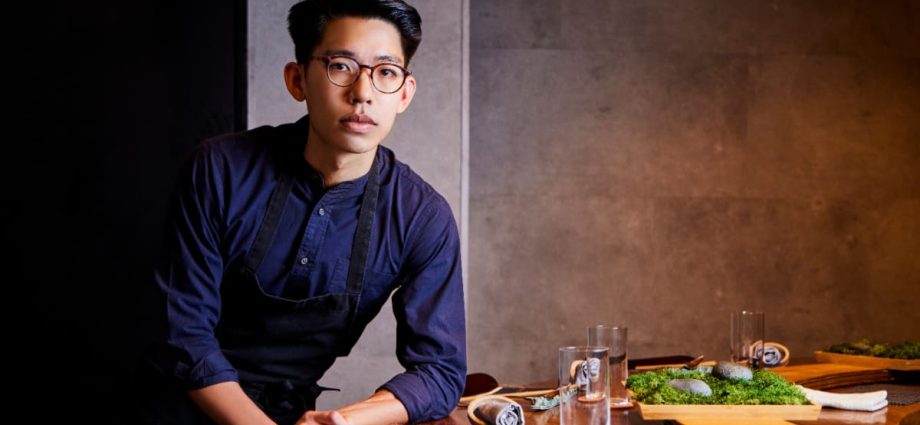
One standout dish that reveals this young chef’s potential is called Tubers, an ode to the sweet potato: Japanese sweet potatoes grown in Chiang Rai are slow roasted and deep fried in duck fat; native orange sweet potatoes are made into gnocchi and glazed with chicken stock; and at the bottom of the bowl, under smoked sweet potato espuma and fried sweet potato chips, is a rich and earthy buah keluak puree.
Sweet potato “was one of the first ingredients I encountered in Thailand. I thought, ‘Let’s create a dish that represents the whole experience of picking the sweet potato out of the soil to cooking it and eating it, and even thinking about it after. The gnocchi replicates that nice chewy texture of the outer part of the sweet potato when you grill it. The espuma represents the smoke from grilling the sweet potato.” When you eat it, “you literally have to dig into layers of everything, like you’re harvesting something”.
Although he’s only two months in, he’s already planning a new menu to be launched in June, because “new ingredients bring new perspectives”, and also, “I get bored”. Pointing to a box in a corner, he said it was full of pumpkins that had been grown in the mountains of Thailand, so “I have no doubt that they will be some of the tastiest pumpkins”.
Also in development is a dish of pork from Sarawak, aged and grilled over fire, paired with mango curry and Sarawak pepper jus; a jambu dessert; mud spiny lobster with rice noodles and egg white, hor fun style; and, of course, the glutinous rice ball that burned him.
“The main focus is to show that the ingredients in the Southeast Asia region are just as good as any European or Japanese ingredient,” he said, citing the added concerns of global warming and carbon footprints.

